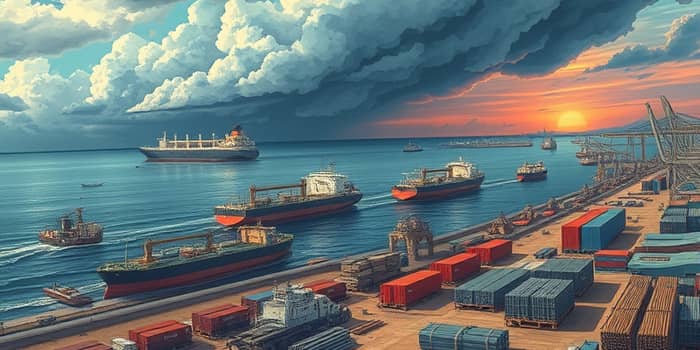
The commodities landscape in the first half of 2025 has been transformed by a series of shocks that upended markets worldwide. From sudden oil spikes to volatile metals prices, traders, policymakers, and businesses have weathered a storm of uncertainties. This article explores the root causes of the current rally, the specific dynamics in various commodity sectors, and practical strategies companies can adopt to bolster resilience in an era of relentless disruption.
Global markets remain on edge amid persistent supply-side disruptions and heightened market instability. The US bombing of Iranian nuclear facilities in June 2025 triggered fears of retaliation against energy infrastructure, putting the vital Strait of Hormuz—a chokepoint for 20–25% of the world’s oil flows—on high alert. Meanwhile, escalating trade wars and sweeping tariff regimes have driven up costs and complicated logistics for commodities ranging from wheat to steel.
In addition to military flashpoints, diplomatic tensions between major economies have led to a cascade of counter-tariffs. Producers and consumers now face a web of duties that can change with little notice, increasing both price volatility and operational risk. As a result, even well-established supply chains are showing signs of strain.
Energy markets led the rally. Brent crude futures briefly surged above $81 per barrel in late June, then settled back after a swift 3% retreat. That spike underscored how rapidly geopolitical events can ripple through global demand and shipping lanes.
In metals, steel prices climbed to around $900 per short ton under the weight of US import tariffs and ongoing logistical bottlenecks. By contrast, aluminum remains dampened by a 200,000-metric-ton global surplus, while copper teeters at a crossroads between supply threats and signs of economic recovery.
Despite these surges, the World Bank forecasts an aggregate decline in commodity prices of roughly 12% in 2025, followed by a further 5% drop in 2026. Such projections highlight the tension between short-term spikes and longer-term softening driven by slowing global growth.
These factors rarely operate in isolation. For example, a severe La Niña event can exacerbate food production losses, while simultaneous labor strikes and ransomware attacks can freeze cargo flows, compounding price pressures across sectors.
Below is a snapshot of key commodity segments and their current dynamics:
Rising input costs and delivery delays are eroding profit margins. Companies that relied on single-source suppliers have found themselves scrambling to secure alternatives as ports backed up and tariffs shifted. Customer confidence has taken a hit as buyers face stock shortages and unpredictable lead times.
Moreover, regulatory shifts and dynamic trade rules have increased compliance burdens. Legal teams and supply chain managers must now track tariff changes in real time to avoid hefty fines and operational bottlenecks.
Forward-looking firms are embracing technology to build resilience. By deploying AI-driven analytics, companies can achieve proactive scenario planning and risk mitigation. Real-time visibility into inventory levels, shipping status, and supplier performance helps decision makers pivot quickly when disruptions hit.
Geographical diversification is particularly vital. Firms are reducing their dependence on chokepoints like the Strait of Hormuz by exploring alternative shipping routes and sourcing from multiple continents.
While risks are skewed to the downside—further trade escalation or climate-related disasters could deepen the rally—sharp price moves create asymmetric opportunities for investors. Energy and essential minerals may offer outsized returns whenever fresh supply shocks materialize.
At the same time, companies that adapt quickly to new market realities stand to gain competitive advantage. Those with agile procurement strategies and robust analytics will be best positioned to negotiate favorable terms and secure supply when competitors struggle.
The road ahead remains uncertain. The risk of deeper global growth slowdowns, renewed trade wars, and escalating geopolitical tensions looms large. At the same time, technological advances in automation, blockchain tracking, and AI promise to reshape supply chain management.
Businesses that invest in digital resilience, diversify supply bases, and foster close collaboration with logistics partners will emerge stronger. In a world where disruption has become the new normal, preparedness is not just a strategy—it is a competitive imperative.
By understanding the complex interplay of geopolitical, environmental, and technological factors driving the current rally, stakeholders can chart a course through volatility. Resilience through diversification and data-driven decision making will be the hallmarks of organizations that thrive amid uncertainty.
References













